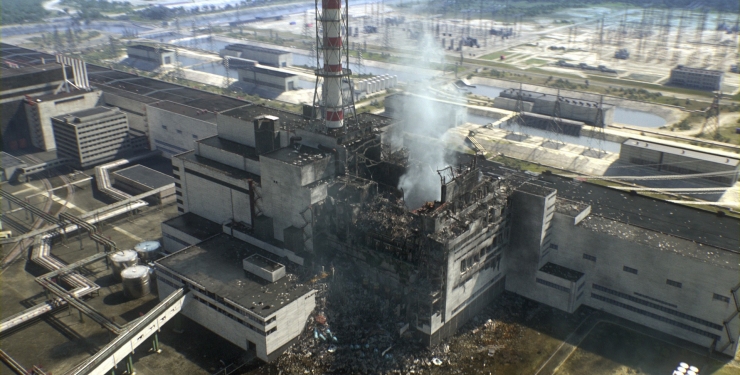There will be no more Chernobyls

How it was possible to blow up the reactor
Anatoly Vasserman, thermal physicist engineer, power engineer (in reserve) of a nuclear submarine
All of the following is taken (and compared) from many different sources. Among them are numerous publications related to the 1986.04.26 disaster, scientific and popular scientific works on nuclear physics and nuclear power engineering, educational materials, my own attempts of analysis, conversations with people much more competent than myself. I could hardly list all these sources, for which I apologize to their authors. Almost inevitable violations of someone's copyright are completely unintentional.
I am also obliged to assure you that none of what follows is secret, not only in fact but also formally.
...
Go slow.
Exactly at the beginning. Shutting down thermal power equipment is a very slow process. Rapid cooling is difficult to make uniform. And in case of uneven temperature redistribution, thermal deformations can shatter even the most massive structure. That is why, for example, to temporarily reduce the power of a ship turbine unit, steam is sent through a bypass pipeline, past the turbine: it is much faster and safer than switching off the boiler heating.
By the way, heat and power plants are started even slower than they are stopped. And there are special reasons for the slow start-up of nuclear reactors, which are worth talking about later.
So, in the evening, when the load on the power system is reduced, the fourth reactor started to be shut down. They lowered the neutron-absorbing rods a little deeper, and the chain reaction went down.
They waited for the reaction level to stabilize, lowered the rods again - the reaction weakened again... Many dozens of such steps to shutdown should be passed before the reactor is not shattered.
To the rescue
When the power of the reactor had already decreased by almost a third, the Chernobyl NPP received a command from the KievEnergo dispatcher.
The shutdown of units in the power system is as routine as possible. By the time of reactor shutdown at one of KievEnergo's thermal power plants, the boiler and turbine generator were to be started after repair. The starting unit would have taken on the load leaving the broad Chernobyl shoulders.
But repair, unlike manufacturing, is a piece thing. It is not always possible to predict its course. The repairmen were delayed for several hours.
And the dispatcher of Kievenergo asked to bring the reactor back to normal power, so that in these few hours to avoid failure, fraught with increased withdrawal of energy from the all-union system. And in an unfavorable scenario, something would have to be shut down.
Power engineers are disciplined. Working in a unified system, you realize that any mistake you make will affect many thousands of colleagues. So the dispatcher's request was accepted for immediate fulfillment.
The absorbing rods went up. And the acceleration began as smoothly as the previous braking.
The same stairs, but with a clunker.
A few hours later, the thermal power plant started working. KievEnergo reported that the reactor could definitely be shut down.
But the time planned for the experiment was gone. And in the morning, repairs began. The station management decided to accelerate cooling of the reactor to the planned level. After all, the normal rate was set by a considerable margin. The allowable cooling rate had been exceeded more than once before, and everyone knew very well how far it was possible to go without damaging the reactor. Power began to be reduced not in the normal mode, but a little faster - at the very speed, the safety of which had already been verified.
The operators turned off the emergency automation immediately. What if cooling would go even faster and steam supply to the turbine would have to be stopped ahead of schedule?
And so it turned out to be. The power level at which it was planned to stabilize in order to establish a uniform mode in the reactor was rushed through. We wanted to work according to the original plan. Otherwise, we'll still have to recalculate the results - again with an error.
Well, we can warm up again. The control rods went up again. But the reactor power remained reduced.
The station was staffed by experienced power engineers. But the peculiarities of the behavior of nuclear reactors were apparently unfamiliar to many of them. Judging by the fact that the reactor's reluctance to restart surprised many of them. So much so that they simply forgot to turn on the automatic control systems.
Or maybe they deliberately didn't want to. Automatics would not allow them to do something forbidden - extracting the reactor from the iodine pit.
Thermal engineering processes - boiling water, turbine rotation, steam condensation - are not very simple, but they have been studied for centuries. So their smallest details are familiar, if not to every passerby, then at least to every engineer at the power plant. But the chain of events heating fuel elements in a nuclear reactor is much less familiar. Therefore, I will start from the basics - those who know the process as well as I do can safely skip the next few sections (at least up to the section "Someone Loses").
...
#USSR #soviet #russian #history #ukraine #chernobyl #СССР #история
Dieser Beitrag wurde bearbeitet. (2 Jahre her)
